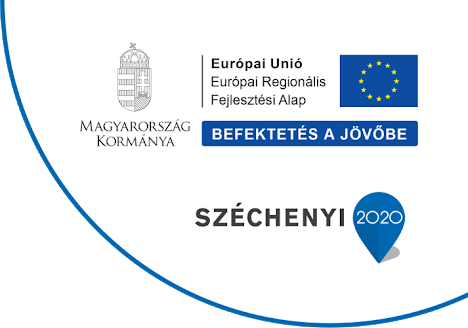
Fodrász
Dynamic reconstruction of a road environment, object-level 3D spatial database using a distributed on-board multisensor system
Objective
The project aims to create a custom-developed on-board sensor and processing hardware device to produce and process multisensor recordings, allowing us to reconstruct an accurate, object-level three-dimensional representation of the road environment and store it in a continuously updated spatial database. An important principle is distributed operation, with recordings and processing carried out by multiple vehicles on a community basis. Dense sampling ensures the robustness of the produced spatial database.
The project's main technological innovations will occur in the following areas: on-board sensor technology, machine vision, geoinformatics, and distributed operating systems.
The project participants are outstanding experts in their respective tasks and are capable of implementing the above technological innovations in the current setup. ITQS has unique experience in the installation of on-board systems and the construction of IT transaction systems, as well as in executing industrially applicable projects. Optimal Optik has more than 15 years of experience in optical and mechanical R&D activities with numerous successful projects. The machine vision group at the Institute of Informatics at the University of Szeged has conducted both scientific and practical basic and industrial research on sensor fusion and the creation of point cloud-based spatial databases. The image processing group at the University of Pannonia has the expertise to develop the most advanced object detection methods. The consortium implementing the project stands out internationally, providing outstanding synergies.
Driverless vehicles are expected to appear on public roads within this decade, generating a strong paradigm shift in the automotive industry. New market niches will open up, offering opportunities for smaller, innovative players with the right technology.
In this project, we aim to create know-how that can enter this niche through an efficient cooperation system.
In 2016, the Hungarian Government clearly expressed that self-driving car manufacturing is the future of Hungarian industry, and they aim to shift the Hungarian automotive industry, which currently consists of assembly plants, to a more knowledge-intensive path. The main goal of our project is to provide innovative technical solutions that support the realization of this governmental strategy.
The relevant actors in the automotive and geoinformatics sectors for our project are companies developing self-driving vehicles, several of which conduct R&D activities in Hungary, such as Mercedes, Knorr-Bremse, Thyssen-Krupp, and ADASWorks. Additionally, there are few market players creating object-level, engineering-precision 3D spatial databases. Among these, the BKK Közút KARESZ system in Hungary is one of the most advanced, but there are also several international players in this field, such as Google Street View, VirtualCitySystems, Point Cloud Domain Working Group (Netherlands), USGS (USA, San Francisco), and Bentley (Belgium, Brussels).
The design phase of the project will be carried out jointly by the participating partners, incorporating the results and experiences of each field and leveraging the creative power of interdisciplinarity.
During the project, we will develop a prototype of a custom on-board multisensor hardware device. This development will be carried out by the researchers and developers of ITQS Kft. and Optimal Optik Kft., keeping in mind the specifications of the image processing team.
In parallel with the device development, we will work on tasks in the field of machine vision, which involves researching and developing unique procedures.
In the case of 3D spatial database reconstruction, we will develop procedures capable of updating the road environment spatial data representation based on available on-board, georeferenced sensor information, and an initial static 3D spatial database (SZTE). The task of object recognition is to detect predefined elements from the sensor information and the spatial database (PE-MIK). Object segmentation assists in the reconstruction of the spatial database, and the spatial database information narrows the search space for object detection – therefore, these two research directions will be closely coordinated. Initially, the data needed for the research will be obtained from external sources, then later from the on-board device developed during the project.
ITQS Kft. will carry out the real system implementation of the algorithms developed during the research activities under the professional supervision of university researchers. The complete machine vision pipeline will be tested using a vehicle simulator by the university partners.
The server-side developments of the distributed system and the near-environment subsystems, along with the development of communication protocols, will be carried out in parallel with the on-board developments by ITQS experts.
Towards the end of the project, ITQS and Optimal Optik will finalize the infrastructure of the distributed system and prepare the production plan for the on-board unit.
Project Information
- Project ID: GINOP-2.2.1-15-2017-00058
- Support Amount: 641,377,574 HUF (six hundred forty-one million three hundred seventy-seven thousand five hundred seventy-four Forints)
- Support Rate (%): 76.74%
- Beneficiary Name: IT Quality Services Kereskedelmi és Szolgáltató Korlátolt Felelősségű Társaság
- Lead Applicant: IT Quality Services Kereskedelmi és Szolgáltató Kft.
- Project Completion Date: 2021.06.30
- Project Implementation Period: 2017.08.01 - 2021.06.30
- Project Manager: Mária Kaldenekker
- Financial Manager: Anett Herendi
- Professional Leader: Dr. Zoltán Kató
Fields of Science
- Engineering and Technology
- Materials Engineering
- Bioengineering
- Optical Engineering
Participants
- Optimal Optik Kft, Support Amount: 38,720,000 HUF
- ITQS Kft (Lead), Support Amount: 290,400,000 HUF
- University of Szeged, Support Amount: 159,135,884 HUF
- University of Pannonia, Support Amount: 153,121,690 HUF




